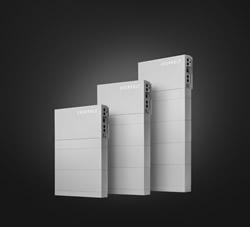Swiss Adopt aggressive feed in tariff law for Renewable Energy
Switzerland recently adopted one of the world's most aggressive systems of feed in tariffs.
First Nation with Specific Tariff for Small Wind Turbines.
Switzerland recently adopted one of the world's most aggressive systems of feed in tariffs. The Swiss, normally best known for conservative traditions, stodgy bankers, and trains that run on time, have joined a ever increasing list of countries using feed-in tariffs to promote the rapid development of renewable energy.
Not content to start with a timid program incrementally raising the bar year by year, the Swiss federal government this spring launched a full-system of feed-in tariffs differentiated by technology, size, and application. There are tariffs, or payments per kilowatt-hour (kWh), for solar photovoltaics, wind, hydro, geothermal, and biomass.
The Swiss system, like those in Germany, France, and Spain, pays a renewable energy generator for every kWh of electricity generated. The payments are made for periods of 20 to 25 years, depending upon the technology.
The new Swiss tariffs, among the highest in the world, are the first to include a specific tariff for small wind turbines--those under 10 kW--of 0.20 SWF/kWh (~$0.20/kWh) for 20 years.
The states of Michigan, Illinois, Rhode Island, and Minnesota have proposed similar tariffs for small wind turbines, $0.25/kWh, but none of the proposals have yet become law.
Tariffs for large wind turbines use the German system of tariff differentiation by resource intensity. Because of the rugged Swiss terrain, the program's designers needed to provide tariffs for wind energy that would enable profitable operation in deep valleys as well as on windy mountaintops, while at the same time protecting ratepayers from unnecessary costs.
In the Swiss system, every wind turbine is paid the same price for its electricity during the first five years. After that, production is averaged. The average is then compared with a reference site defined in the law. Depending upon the wind resource, the premium payment of 0.20 SWF/kWh is extended beyond the first five years. After the premium period, the tariff falls to 0.17 SWF/kWh (~$0.17/kWh) for the remainder of the 20 year contract. For the reference site, the premium payment of 0.20 SWF/kWh ($0.20/kWh) is extended for the full 20-year period.
The wind tariffs are among the highest in the world, but less than those requested by Suisse Eole. The trade association calculated that with Swiss terrain, and the high cost of wind turbines, 0.28 SWF/kWh would be necessary for the first five years, and 0.20 SWF/kWh for the post-premium period.
The tariffs for solar PV put Switzerland on a par with Germany and France, though the contract period of 25 years is the longest outside Spain. For rooftop systems of less than 10 kW in size, the tariffs are 0.75 SWF/kWh. For building integrated solar PV, the tariffs rival those in neighboring France. For building-integrated systems of less than 10 kW in size, the tariffs are 0.90 SWF/kWh ($0.88/kWh).
Currently there are 29 MW of solar PV in the country; 7 MW were installed in 2007.
The Swiss, ever meticulous, avoided disrupting the solar industry while the new law was under lengthy discussions, by grandfathering solar PV installations installed from 2006 through the law's introduction in April 2008.
Geothermal plants of less than 5 MW in size will receive 0.30 SWF/kWh ($0.30/kWh) for 20 years.
Funds to pay for the tariffs will come from a systems benefits charge of 0.6 SWF/kWh on all electricity consumption, says Reto Rigassi of Suisse Eole, the Swiss wind energy association. This is equivalent to 320 million SWF, or about $310 million, at current exchange rates.
While there is no MW cap on the program, there is a cap on the portion contributed by each technology to the total program. Hydro generation is capped at 50% of the fund, and wind at 30%. However, the wind association's Rigassi explains that the entire program is capped at 150% of the funds collected.
Most controversial are the limits placed on solar PV. Solar photovoltaics for grid connect systems are capped at 5% of the fund. Swissolar, the Swiss solar trade association, has called on the government to lift the cap, arguing that solar PV could ultimately meet one-third of Swiss electricity supply.
There are currently 1,000 people employed in the Swiss solar industry, and Bank Sarasin suggests that the number could increase if Switzerland developed its home market with more aggressive policies.
The program will be reviewed every five years. The first review may be within three years.
As elsewhere, special provisions are made for data collection from the private generators who participate in the program. The law specifically states that generators must provide data on generation upon the government's request.
Swiss parliamentarians have been debating a modern renewable energy policy for several years. The country's renewable energy advocates have watched in frustration as renewable energy boomed in Germany to the north, France to the west, and Italy to the south. Now, with one of the world's most progressive systems of Advanced Renewable Tariffs, the Swiss are in the game.
Featured Product

EVERVOLT home battery storage: Standby power with or without solar
Renewable energy stored in an EVERVOLT home battery system is the perfect backup plan against an uncertain utility grid and weather events. Run key appliances longer and live life when the unexpected happens. EVERVOLT battery storage systems are covered by a complete 12-year warranty from Panasonic.
